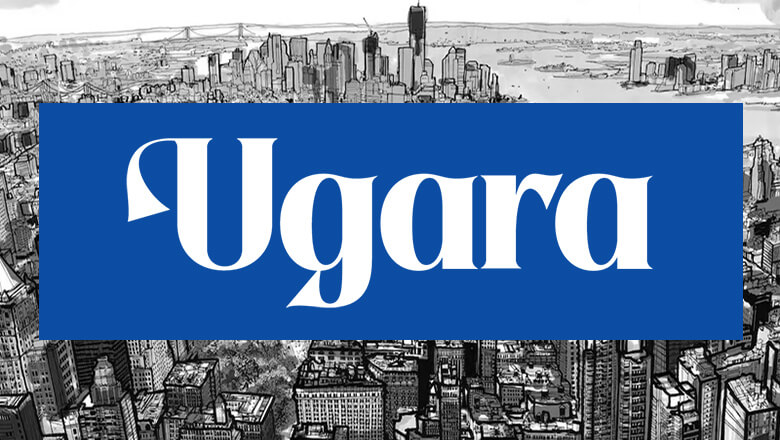
views
LinkedIn Private Browsing Modes
LinkedIn has 3 browsing options: public, private, and semi-private. Public browsing works as expected; when you view other profiles, users can see your name and any job information you've added to your profile. However, LinkedIn's two privacy modes offer different levels of anonymity when browsing the website: Private profile characteristics. In this “semi-private” mode, your name won’t be visible, but some of your profile characteristics will be; you can choose to display your company or job title (or both). Private mode. In private mode, none of your information will be visible to users whose profiles you view. You’ll be listed as an “Anonymous LinkedIn Member” instead.
Turning on LinkedIn Private & Semi-Private Browsing (Desktop)
Log into LinkedIn and select the “Me” icon. Enter the email address (or phone number) and password associated with your LinkedIn account on the login page. Then, once logged in, look to the top right side of your screen for a circular icon containing your profile picture labeled Me and click on it to proceed.
Navigate to “Settings & Privacy.” Scroll through the dropdown menu under Me and select Settings & Privacy (under Account). Then, on the main Settings page, select Visibility from the list on the left side of your screen. Under the Visibility of your profile & network section, select Profile viewing options.
Select the privacy mode you want to use. From here, you can simply choose how private you want your profile to be when browsing LinkedIn. You can select the site’s “semi-private” mode—called Private profile characteristics—or select Private mode to keep your profile fully private when browsing. LinkedIn will automatically save your choice once you select your privacy mode, so you can exit the page and get back to browsing afterward.
Turning on Linkedin Private & Semi-Private Browsing (Mobile)
Log into the LinkedIn app and tap “Settings.” Tap on the LinkedIn app icon; when prompted, enter the email (or phone number) and password associated with your account. On the app’s homepage, tap on your profile picture in the top left corner of the screen. Then, tap Settings from the dropdown menu.
Tap “Visibility,” then select “Profile viewing options.” In Settings, tap on Visibility and look under Visibility of your profile & network (just like you would on a desktop). Tap Profile viewing options, then select the privacy mode you want to use; you can choose from Private mode or Private profile characteristics. Once you select the privacy mode you want, you can exit the Visibility page and use the app like you normally would.
Turning Off LinkedIn’s Private Mode
Return to “Profile viewing options” and select a different mode. You have three choices: Private mode, Private profile characteristics, and Your name and headline (essentially “public” mode). So, if you’re using Private mode already, all you have to do is select the new mode you want to use, and LinkedIn will automatically save the change. Once you turn off Private mode on LinkedIn, the “Who’s Viewed Your Profile” feature will return within 24 hours.
Does LinkedIn’s private mode cost money?
No, private mode is free and accessible for all LinkedIn users. Anyone with a LinkedIn account can browse the site in Private mode (or use the semi-private and public options). However, there are a couple of differences in how Private mode works for Premium subscribers and those who don’t pay for Premium: Free LinkedIn account. If you’re using Private mode with a free account, the “Who’s Viewed Your Profile” feature will be turned off, your viewer history will be erased, and you won’t get more information about users who view your profile. Premium subscription. With a subscription, you’ll still be able to see people who viewed your profile in the last 90 days (though you won’t see their names if they’re using private mode as well). Remember: you also can’t block people using Private mode or force them to show their names.
When to Use Private Mode on LinkedIn
Improve your profile and expand your network. If you aren’t ready for potential employers, clients, or connections to see your profile yet, use Private mode to browse so the users whose profiles you view won’t check you out. In private mode, you can also study colleagues’ profiles (or those of people with similar job titles) to determine how to optimize your profile. Take cues from other profiles and use them as examples to help make yours as compelling as possible! At the same time, look for people you’d like to connect with in the future. Once you’re done improving your profile, you can turn off Private mode and start requesting to connect with people.
Research business leads. If you’re trying to generate new leads for your business, you may want to research potential contacts in Private mode before contacting them. This can help you get a better sense of your audience without tipping them off that you’re about to make contact; then, when you have a full list of leads and a concrete plan for what to say to them, you can go public again.
Do competitor research. You might not want competitors to know you’re checking out their profiles and trying to learn more about them—in which case, Private mode can help you browse anonymously. You can find competitors with the site’s People also viewed feature and in LinkedIn groups (if you’re unsure where to look).
View potential candidates for a job. If you’re a recruiter or responsible for talent acquisition at your company, consider using Private mode while researching candidates who might be worth contacting. Once you feel confident you have a list of strong candidates, you can turn off Private mode and contact them directly. You can also use Private mode as a recruiter if you want to learn more about an applicant and study their profile anonymously.
Do customer or client research. Researching customers can help you tailor your sales pitch to their needs and interests, which is why doing some research beforehand may help you out quite a bit. If you want to look up customers and clients without them knowing you’re doing it, try browsing in Private mode.
Protect yourself from scams. Phishing attacks can take advantage of any easily available personal information. So, if you’re worried about attracting scammers or simply want to feel more secure online, you may want to use Private mode to ensure your personal information isn’t exposed while browsing the profiles of people you don’t know.
Making Your LinkedIn Profile More Secure
Adjust other visibility settings to protect your privacy. Other optional settings can secure your profile on the same page where you can adjust your private browsing mode (Visibility, accessed through Settings & Privacy). Nonetheless, keep in mind that LinkedIn is a networking site—so if you want to make business connections, you’ll likely need to share some information. Ways to make your profile more private include: Editing your profile’s visibility. Under Edit your public profile, you can set your profile’s public visibility and decide who can see it (first-degree connections, anyone on LinkedIn, or so on). Changing who can see your last name. You can opt to display only your last initial instead of your entire last name. Adjusting the visibility of your email address. You can block people from seeing and downloading your email address and look you up on LinkedIn by email or phone number. Hiding your connections. There’s a setting to stop other people from seeing your connections list or a list of users you follow. Turning off “Representing your organizations and interests.” This will stop your name from coming up when people look for your company. Blocking your profile from being discovered outside of LinkedIn. Stop people from finding your profile unless they’re on LinkedIn (meaning they can’t find you in a search engine). Deleting personal information. Outside of visibility settings, you can also delete any info you don’t want to share (while keeping in mind that there’s some info employers will want to see, like your job title and work history).


















Comments
0 comment